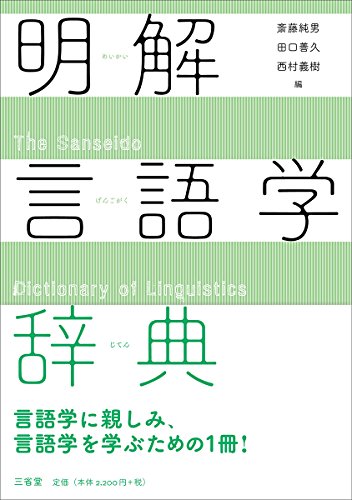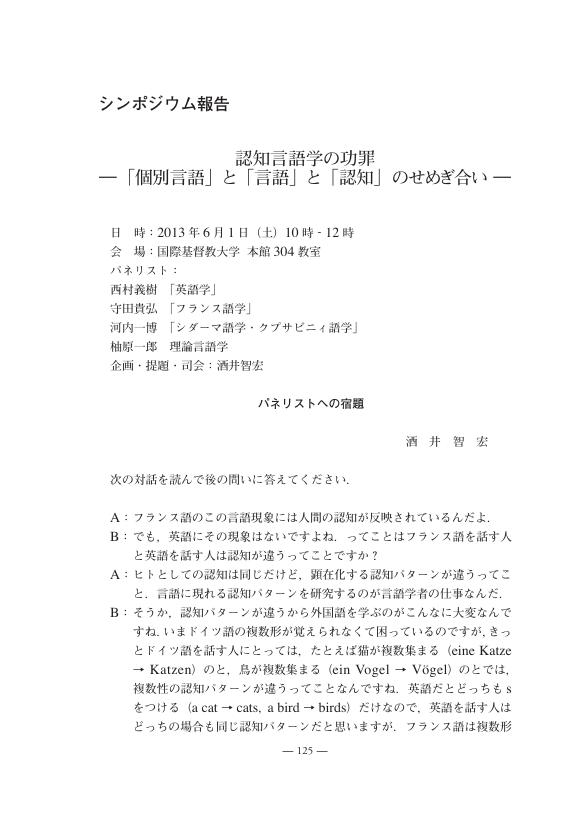2 0 0 0 明解言語学辞典
- 著者
- 斎藤純男 田口善久 西村義樹編
- 出版者
- 三省堂
- 巻号頁・発行日
- 2015
2 0 0 0 OA 中国語とその周辺言語におけるダイクシス
1 0 0 0 OA 対照研究への認知言語学的アプローチ
- 著者
- 西村 義樹
- 出版者
- 日本認知科学会
- 雑誌
- 認知科学 (ISSN:13417924)
- 巻号頁・発行日
- vol.3, no.3, pp.3_28-3_37, 1996-08-31 (Released:2008-10-03)
- 参考文献数
- 51
Among the central features of a major strand of cognitive linguistics (R. W. Langacker's cognitive grammar) is its symbolic view of grammar (syntax in particular): grammar can be adequately characterized as a system composed of form-meaning pairings (rather than a purely formal component organized independently of semantic factors). By way of illustrating how the symbolic view can give us insights into cross-linguistic variation, cognitive accounts are provided of two areas of grammar where English and Japanese exhibit marked contrasts. It is suggested that apparently arbitrary ways some grammatical units (e.g. grammatical relations and constructions) behave begin to make perfect semantic sense if (1) construal (as opposed to conceptual content) is held to form an essential part of an expression's semantic value, (2) proper attention is given to the ubiquity in language of categories built around experientially grounded prototypes (rather than classical categories defined by sets of necessary and sufficient conditions), and (3) a usage-based model of linguistic structure (in contrast to the traditional reductionist view of grammar as an algorithmic device) is adopted.
1 0 0 0 OA 認知言語学の功罪 「個別言語」と「言語」と「認知」のせめぎ合い
1 0 0 0 メンタル・コーパス : 母語話者の頭の中には何があるのか
- 著者
- ジョン・R.テイラー著 西村義樹 [ほか] 編訳 古賀裕章 [ほか] 訳
- 出版者
- くろしお出版
- 巻号頁・発行日
- 2017
1 0 0 0 書評 小柳智一著『文法変化の研究』
- 著者
- 古賀 裕章 西村 義樹
- 出版者
- 國學院大學
- 雑誌
- 國學院雜誌 = The Journal of Kokugakuin University (ISSN:02882051)
- 巻号頁・発行日
- vol.120, no.3, pp.55-58, 2019-03


